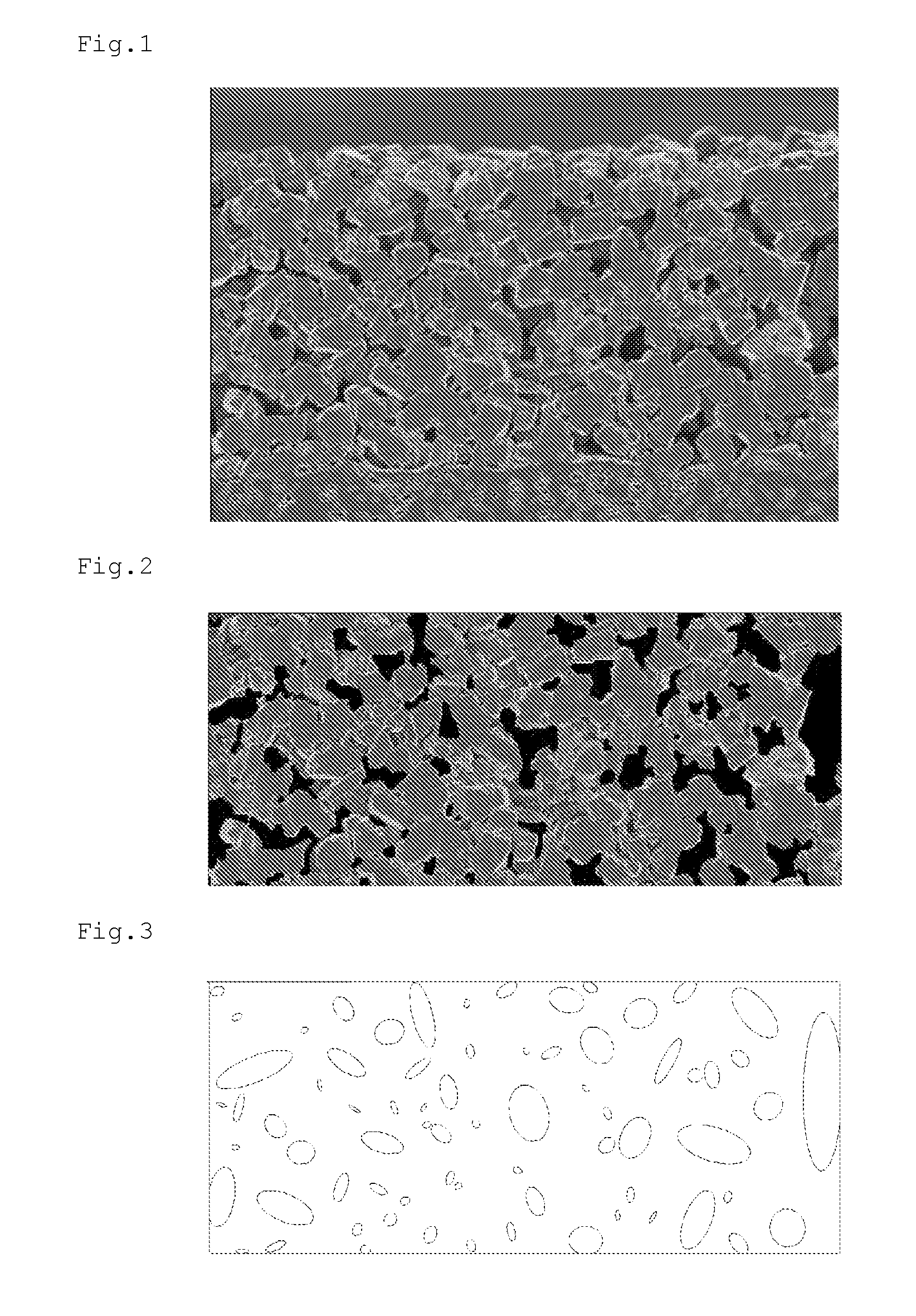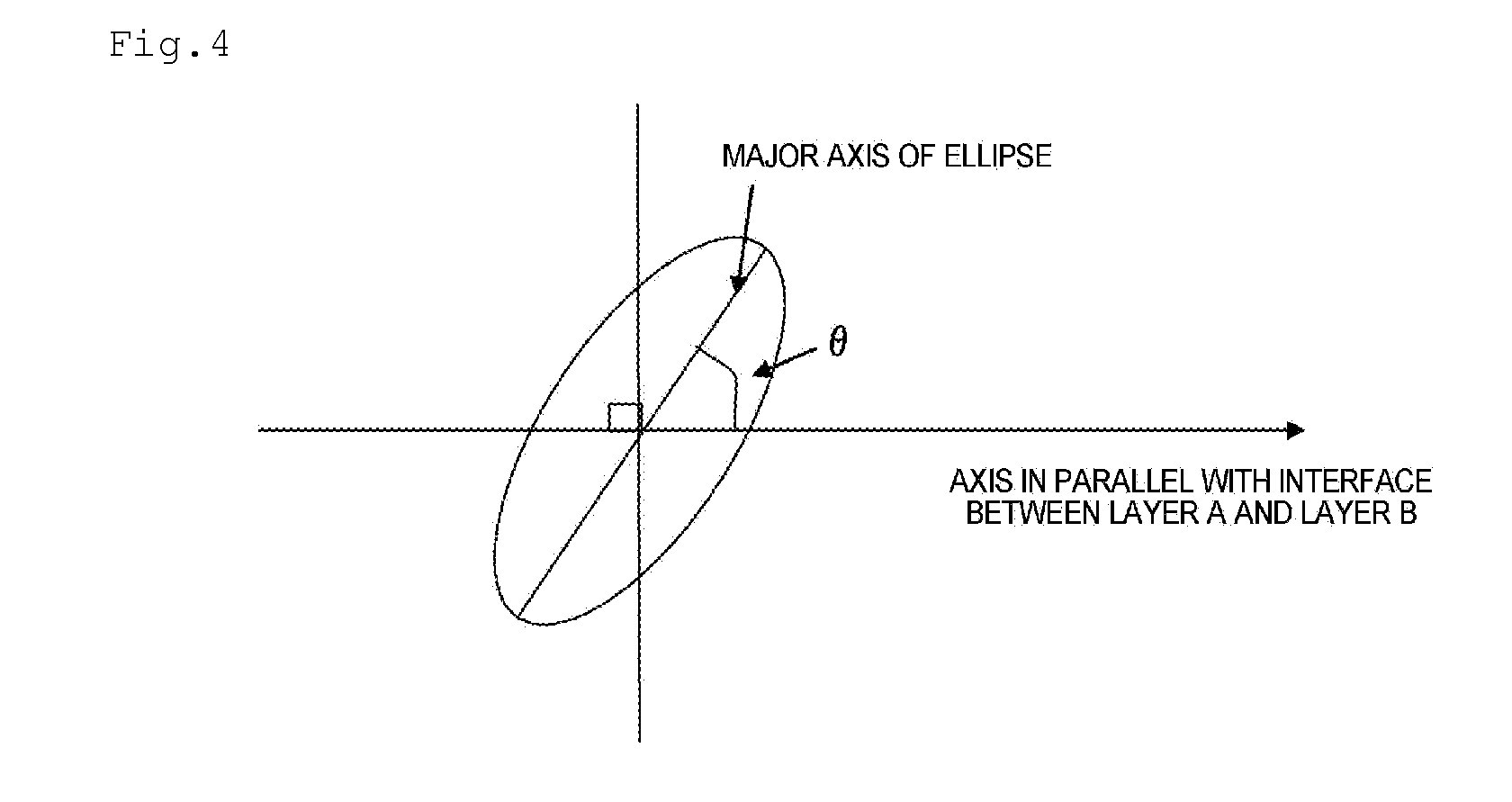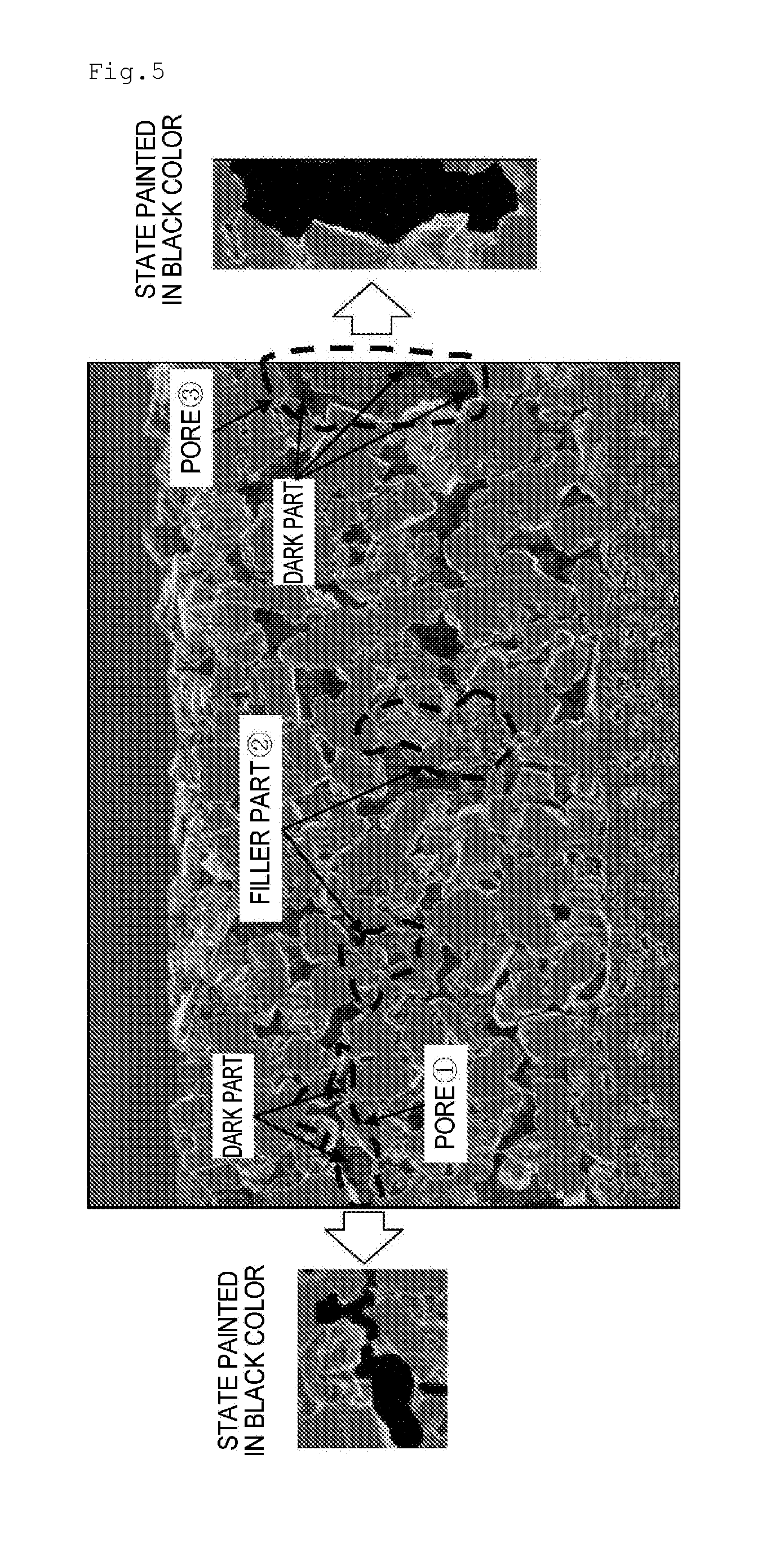Separator for Nonaqueous Electrolyte Batteries, and Nonaqueous Electrolyte Battery
a technology of nonaqueous electrolyte and separator, which is applied in the direction of batteries, sustainable manufacturing/processing, cell components, etc., can solve the problems of short circuit between the ends of the battery, the temperature in the battery continues to rise, and the electrolyte may be decomposed, etc., to achieve excellent ionic conductivity, low membrane resistance, and high output characteristics
- Summary
- Abstract
- Description
- Claims
- Application Information
AI Technical Summary
Benefits of technology
Problems solved by technology
Method used
Image
Examples
example 1
[0163]Using a tumbler blender, 47 wt % of a homopolymer of polyethylene having an Mv of 700,000, 46 wt % of a homopolymer of polyethylene having an Mv of 300,000, and 7 wt % of a polypropylene having an Mv of 400,000 were dry blended. To 99 wt % of the mixture composed only of the polymers thus obtained, 1 wt % of pentaerythrityl-tetrakis-[3-(3, 5-di-t-butyl-4-hydroxyphenyl)propionate] as an antioxidant was added to be dry blended once more using a tumbler blender, so that a mixture of the polymers and the like was obtained. The obtained mixture of polymers and the like was subjected to nitrogen substitution and then supplied to a biaxial extruder under nitrogen atmosphere through a feeder. Further, a liquid paraffin (dynamic viscosity at 37.78° C.: 7.59×10−5 m2 / s) was injected into an extruder cylinder using a plunger pump.
[0164]The feeder and the pump were adjusted such that the liquid paraffin occupied a proportion of 65 wt % in the whole mixture to be melt kneaded and extruded. ...
example 2
[0171]Except that the porous layer (layer B) had a thickness of 7 μm, a multilayer porous membrane was obtained by the same method as in Example 1.
example 3
[0172]Except that plate-like aluminum hydroxide oxide particles were used, a multilayer porous membrane was obtained by the same method as in Example 1.
PUM
| Property | Measurement | Unit |
|---|---|---|
| area | aaaaa | aaaaa |
| thickness | aaaaa | aaaaa |
| thickness | aaaaa | aaaaa |
Abstract
Description
Claims
Application Information
 Login to View More
Login to View More - R&D
- Intellectual Property
- Life Sciences
- Materials
- Tech Scout
- Unparalleled Data Quality
- Higher Quality Content
- 60% Fewer Hallucinations
Browse by: Latest US Patents, China's latest patents, Technical Efficacy Thesaurus, Application Domain, Technology Topic, Popular Technical Reports.
© 2025 PatSnap. All rights reserved.Legal|Privacy policy|Modern Slavery Act Transparency Statement|Sitemap|About US| Contact US: help@patsnap.com



